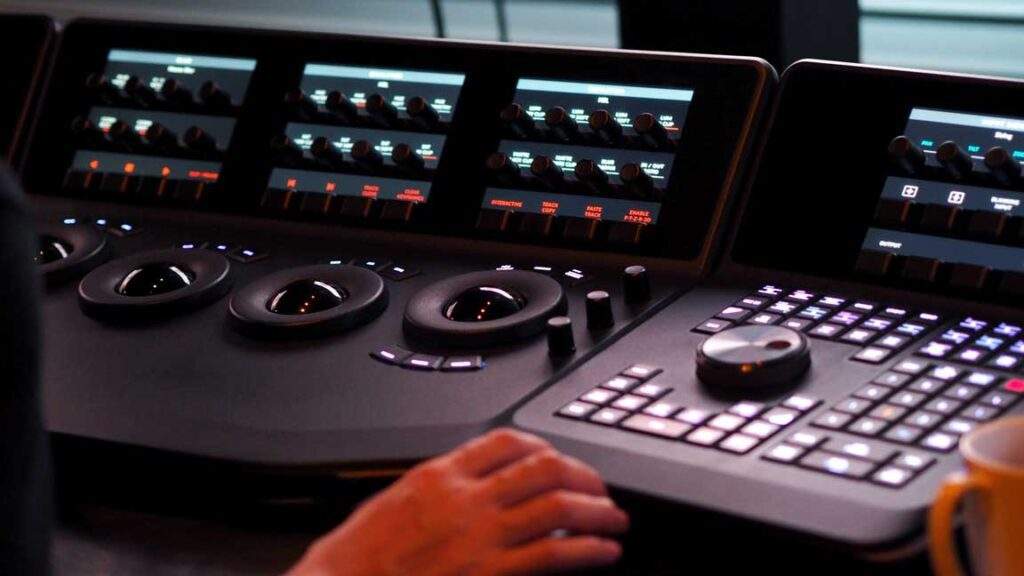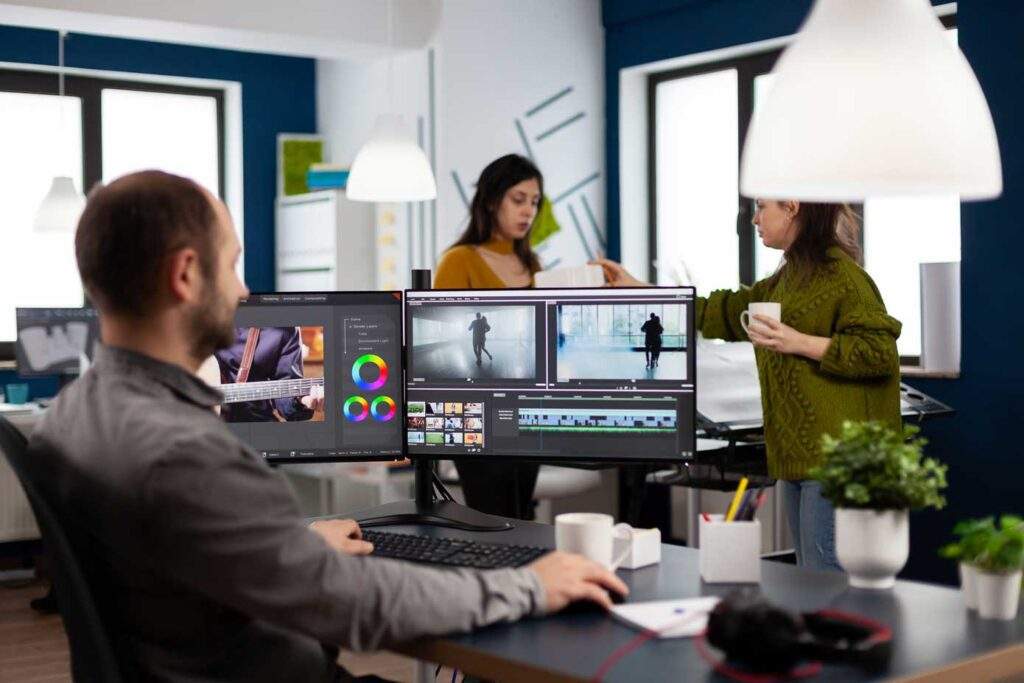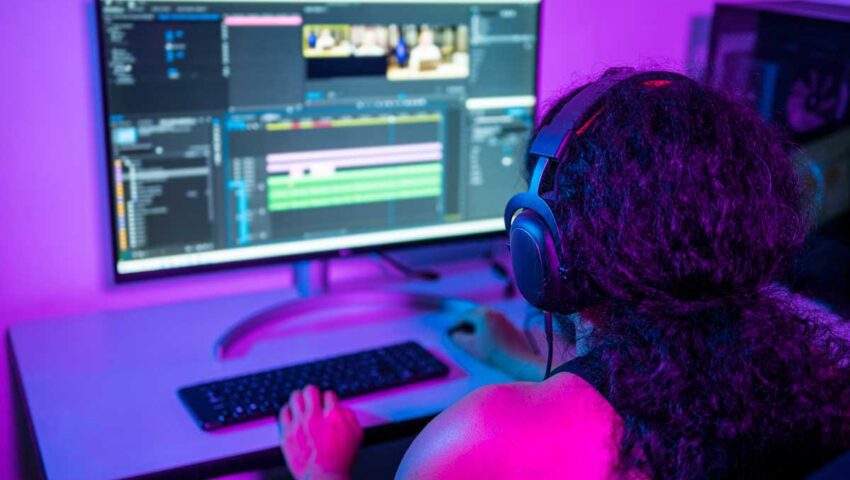The Future of Video Editing: Unleashing the Power of AI
In recent years, the field of video editing has witnessed a transformative evolution, thanks to the integration of Artificial Intelligence (AI). This cutting-edge technology has revolutionised the way videos are created, edited, and enhanced. With its ability to automate cuts, upscale content, and generate audio, AI is paving the way for a more efficient and exciting future in video editing. While a lot of the technology is still in development and its practical uses are still far off, there is AI based technology that can be used by videographers and editors today.
A Real-World Example: AI Upscaling
AI upscaling is a revolutionary technology that has transformed the way we enhance the resolution and quality of digital content. Through sophisticated algorithms and deep learning models, AI upscaling algorithms can take low-resolution images, videos, or even text and intelligently enhance them to higher resolutions with remarkable clarity and detail. By analysing patterns, textures, and context within the data, AI algorithms can generate missing information and fill in the gaps, resulting in significantly improved visual or textual output.
One of the key advantages of AI upscaling is its ability to preserve and enhance fine details, ensuring that the upscaled content remains faithful to the original while providing a substantial improvement in quality. This technology has found applications in various domains, including image and video processing, gaming, virtual reality, and even medical imaging. It enables users to experience sharper, more immersive visuals and enjoy content in higher fidelity.
Moreover, AI upscaling techniques are constantly evolving, with researchers and engineers continuously refining and optimizing algorithms to produce even better results. The training of deep learning models on vast datasets and the advancements in computational power have significantly contributed to the progress in AI upscaling capabilities. As a result, we can expect further advancements in the future, with AI upscaling becoming more accessible and producing even more impressive outputs.
Streamlining Workflow and Efficiency
One of the key benefits of AI in video editing is its ability to streamline workflows and enhance efficiency. Traditionally, video editing required manual labour and time-consuming processes. AI-powered algorithms can automate mundane tasks like video stabilisation, colour correction, and even basic editing cuts. By delegating these repetitive tasks to AI, video editors can focus more on their creativity and storytelling, resulting in a faster and more efficient editing process.
A Real-World Example: Scene Edit Detection
Adobe’s Scene Edit Detection feature brings several benefits to video editing workflows. This innovative tool utilises artificial intelligence and machine learning algorithms to automatically detect scene changes within video footage, simplifying the editing process and saving valuable time for video editors.
One of the key advantages of Adobe’s Scene Edit Detection is its ability to accurately identify scene cuts and transitions. This eliminates the need for manual scrubbing through lengthy video files to identify where one scene ends and another begins. By automatically detecting scene changes, editors can quickly navigate through their footage and precisely select the desired segments, leading to more efficient editing workflows.
Enhancing Visuals and Special Effects
AI has the potential to take visual effects in video editing to a whole new level. Machine learning algorithms can analyse vast amounts of data, enabling the creation of realistic and visually stunning effects. Whether it’s adding or removing objects from a scene, replacing backgrounds, or creating lifelike animations, AI algorithms can generate highly realistic visuals, making the editing process more versatile and visually engaging.
A Real-World Example: AI Voice Generators
One of the primary advantages of AI voice generators is their ability to automate the process of generating voice content. Traditional voice recording requires hiring professional voice actors, setting up recording studios, and investing time and resources. AI voice generators offer a more efficient and cost-effective alternative by transforming written text into high-quality audio in a matter of seconds. This saves both time and money for content creators, allowing them to produce audio content more rapidly and at scale.
AI voice generators also offer versatility in voice selection. Users can choose from a range of voices with different accents, genders, ages, and tones. This flexibility allows for customisation and ensures that the generated audio aligns with the intended audience and context. It also offers opportunities for creative expression, enabling content creators to bring their characters or narratives to life with distinct voices.
An important consideration is the issue of consent and attribution. If AI-generated voices are used to create content that mimics or imitates real people, it is crucial to obtain consent and give appropriate credit to the original voice actors or owners of the voice samples used for training the AI model. Proper attribution ensures fairness, respects intellectual property rights, and avoids potential legal issues.
Additionally, while AI voice generators have made significant advancements in producing natural-sounding voices, they may still lack certain human qualities and nuances. Emotional nuances, subtle intonations, or unique vocal characteristics that define human communication may not be fully replicated by AI systems. It is essential to recognize these limitations and consider the appropriate context and application for AI-generated voices.

Content Analysis and Personalisation
AI-powered video editing tools can analyse the content of videos, providing valuable insights to editors. These algorithms can recognise and categorise objects, scenes, and even emotions displayed by individuals. This analysis allows for improved content organisation, targeted editing decisions, and the potential for personalised editing based on individual preferences. Furthermore, AI algorithms can recommend suitable music tracks, transitions, and effects, empowering editors with creative suggestions and enhancing the overall quality of the final product.
The Human Element in Video Editing
While AI brings remarkable advancements to video editing, it is important to acknowledge the continued importance of human creativity and intuition. AI acts as a powerful tool that assists and empowers video editors, but the final decisions and artistic choices still rest in the hands of skilled professionals who bring their unique vision to the editing process.
The risks of using AI
AI has revolutionised numerous industries, including writing and art. AI-powered tools are now capable of generating content, composing music, and creating visual artwork. While this technological advancement opens exciting possibilities, it also carries certain risks that need to be carefully considered.
One of the primary concerns with AI-generated writing or art is the lack of originality and authenticity as well as the issue of copywrite and intellectual property. AI systems learn from existing data and replicate patterns, leading to the production of content that may seem derivative or lacking in genuine creativity. Genuine art and writing often stem from personal experiences, emotions, and unique perspectives, which AI lacks. The result can be a homogenisation of artistic expression, leading to a loss of diversity and individuality in creative works.
Another risk lies in the ethical implications of AI-generated content. Plagiarism becomes a significant concern when AI is used for writing. AI systems can inadvertently replicate existing works, infringing upon intellectual property rights and devaluing the creative efforts of human artists and writers. Additionally, there are challenges in attributing authorship and determining the responsibilities and rights associated with AI-generated works.
There are also concerns regarding the impact of AI on employment in creative industries. As AI becomes more sophisticated in generating content, it has the potential to replace human artists and writers in certain areas. This could lead to job displacement and loss of livelihoods, particularly for those whose work is more easily replicated or automated.
Summary
As AI continues to evolve, video editing will undoubtedly experience even more groundbreaking advancements. From streamlining workflows to enhancing visual effects and offering personalized editing options, AI empowers video editors to create compelling and immersive content. With this symbiotic relationship between AI and human creativity, the future of video editing is brighter than ever.

